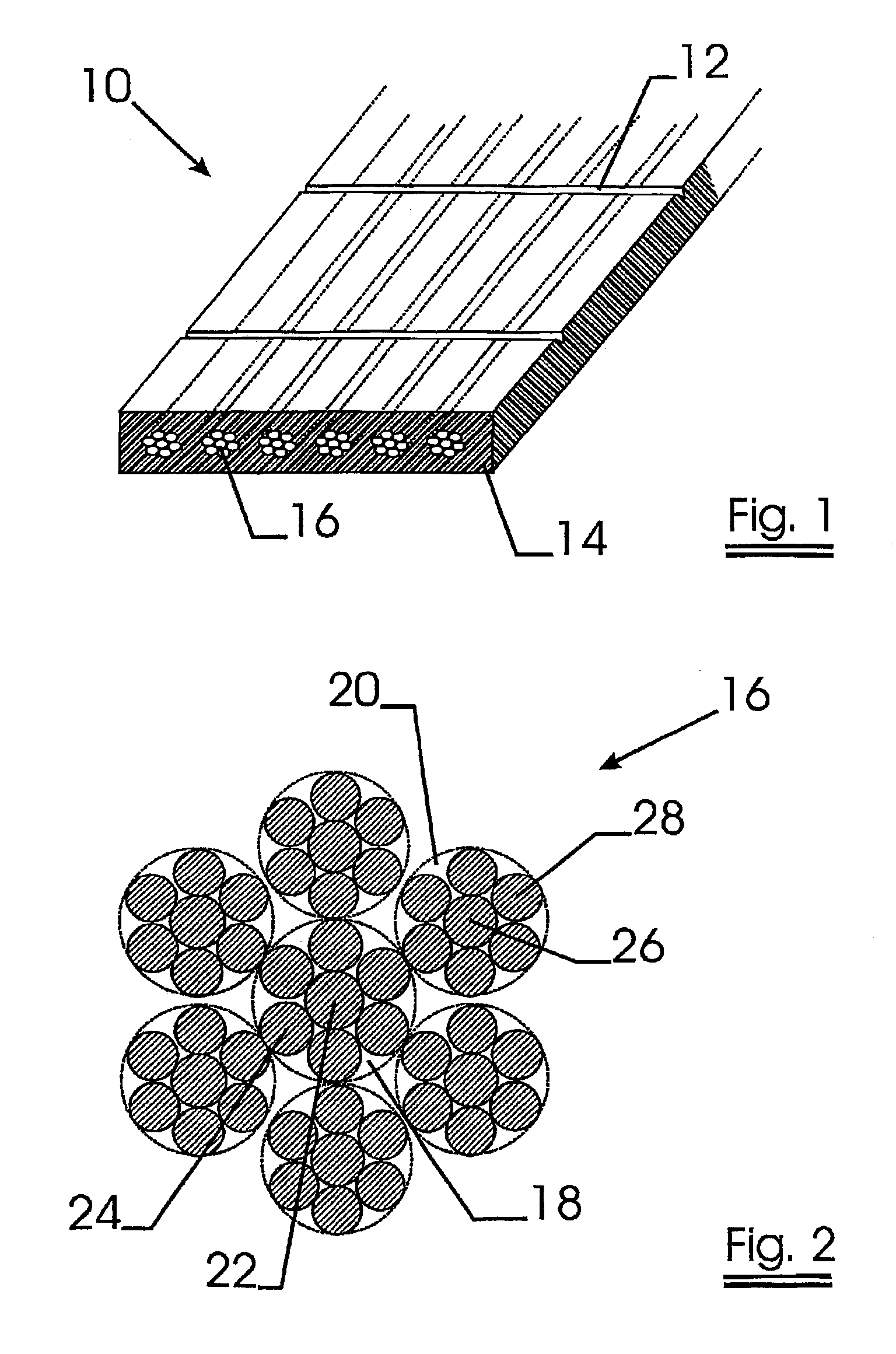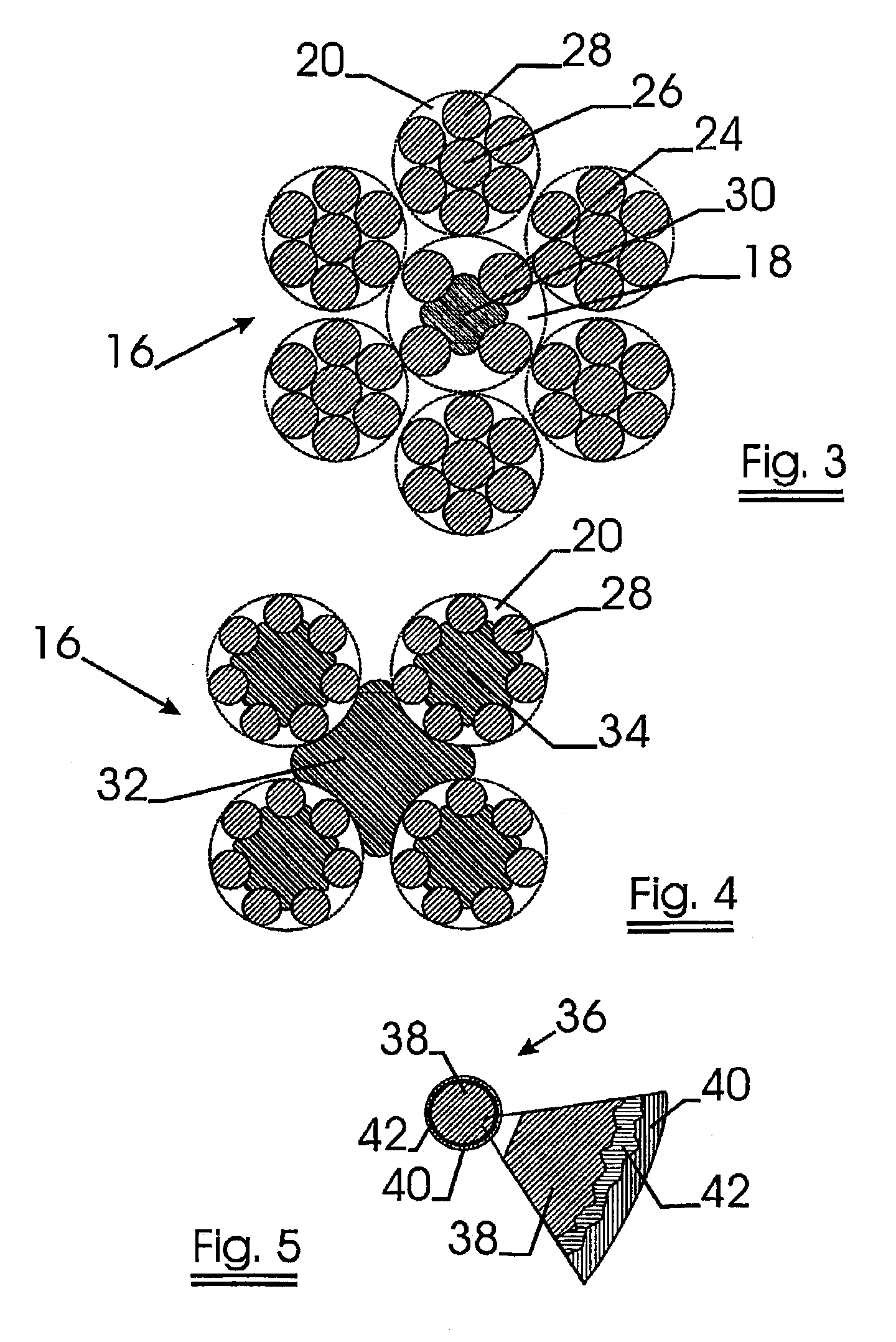Zinc-coated steel cord with improved fatigue resistance
a zinc coating and fatigue resistance technology, applied in the field of steel cords, can solve the problems of difficult to combine a suitable level of corrosion resistance with an acceptable level of fatigue resistance, decrease fatigue resistance, and zinc coating has its drawbacks, so as to improve mechanical anchoring, reduce the dust of zinc, and increase the corrosion resistance of steel filaments
- Summary
- Abstract
- Description
- Claims
- Application Information
AI Technical Summary
Benefits of technology
Problems solved by technology
Method used
Image
Examples
Embodiment Construction
[0023]FIG. 1 shows a schematic view of a composite belt 10 according to the invention. The belt 10 is provided with grooves 12, which is a result of its manufacturing process: the grooves are located at the places where teeth were guiding the belt 10.
[0024]As an alternative, grooves or teeth may also be present in the longitudinal direction of the belt so as to constitute a so-called V-grooved belt (not shown).
[0025]The belt 10 has a matrix material 14 out of polyurethane. Other suitable thermoplastic elastomers are thermoplastic polyolefin homopolymers or copolymers, olefinic rubbers, block-copolymers of styrene / conjugated diene / styrene and / or its fully or partially hydrogenated derivative, optionally compounded with a thermoplastic polyolefin homopolymer or copolymer, or blends of the foregoing. Such thermoplastic elastomers are described in more detail in WO-A-99 / 55793 (Advanced Elastomer Systems and N.V. Bekaert S.A.).
[0026]The belt 10 is further reinforced with several steel co...
PUM
| Property | Measurement | Unit |
|---|---|---|
| thickness | aaaaa | aaaaa |
| thickness | aaaaa | aaaaa |
| thickness | aaaaa | aaaaa |
Abstract
Description
Claims
Application Information
 Login to View More
Login to View More - R&D
- Intellectual Property
- Life Sciences
- Materials
- Tech Scout
- Unparalleled Data Quality
- Higher Quality Content
- 60% Fewer Hallucinations
Browse by: Latest US Patents, China's latest patents, Technical Efficacy Thesaurus, Application Domain, Technology Topic, Popular Technical Reports.
© 2025 PatSnap. All rights reserved.Legal|Privacy policy|Modern Slavery Act Transparency Statement|Sitemap|About US| Contact US: help@patsnap.com



